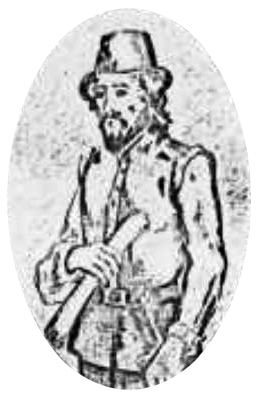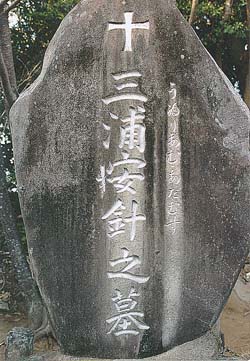Subscribe to Blog via Email
Join 296 other subscribers
Shōgun
Three weeks ago (I’m that far behind in my blogging), I went away for the weekend, to spend my birthday in Bendigo. As I alerted readers here. Two days spent offline; yes, I did get the shakes, and I did propose to pop over to MacDonald’s to check my email, and it’s a good thing the Macca’s was just far enough from my hotel accommodation that I couldn’t pick up the WiFi signal.
I chose Bendigo because it’s the one regional Victorian town I could picture myself living in. I could picture myself living there for the following sketchy reasons:
- it’s less than two hours away from Melbourne by train (think of the blogging I could get done in transit!);
- it has a block of la-de-dah restaurants;
- it has a gallery and an art scene, which is good not because I have anything to do with the visual arts, but because galleries and art scenes bring cool people to town;
- it has a teeny tiny tramway, which is now just for tourists, but used to be real;
- the Gold Rush bequeathed the town a critical mass of monumental stone edifices, enough statues of Queen Victoria to remind me of Montreal, and a fountain with, um, nicely proportioned maidens. (What’s that Greek euphemism again? “She has a rich spiritual world.” Where “spiritual” in Greek is pneumatikos.)
- And yes, that sadly is the limit of my engagement with the visual arts.
- Lastly… their fountains have running water. I doubt any fountain in Melbourne will ever have running water again.
Bendigo is lovely, and I’m glad I went; but it rained for much of the weekend. So I went to the local boozerie and stocked up on Orahovac and Nocello and Icewine. (Mmm, Orahovac. Mmm, Icewine. Meh, Nocello—I’ve never warmed to hazelnut.) And I watched the full miniseries of Shōgun on DVD.
It is profoundly embarrassing to write this, given that my blogroll includes my former student Matt Treyvaud’s No-Sword blog, wherein Matt, now a permanent resident of Japan, explicates the ways of Nippon to the world. It feels like someone linking to Hēllēniksteukontos and writing, “Tsakonian is descended from Ancient Spartan! And I saw 300 yesterday! THIS! IS! SPARTA! FTW!!!1!1″
(Which in Tsakonian would be Ετηνεγί! ένι! α Σπάρτα! γτΠμ! Or something like that. And please don’t make me spell out γτΠμ: I may be blasphemous, but my readers need not be.)
So I’m sorry to abase the level of cross-cultural discourse by saying, “I rewatched a 1980 miniseries on Mediaeval Japan! That was anachronistic about Japanese address terms! And it had Ninjas!!!!1!!11”
But it *was* a pretty cool mini-series in 1980, which managed to get a schoolyardful of Cretan kids trying out Japanese phrases on each other. And it’s still cool thirty years later. Not because of the plot—Blackthorne‘s protestations of love for Mariko are embarrassing, the reason Mariko has to sacrifice herself is not explained properly, the cliffhangers are clunky, the struggles of the warlords are remote. (Although as Basil Exposition characters go, John Rhys-Davies’ Rodriguez is manic enough to do a three-minute potted history of Japan, with panache.)
But no, Shōgun is cool because of the director’s brilliant idea to tell the story from Blackthorne’s point of view, a foreigner shipwrecked in Japan with not a word of Japanese (although with plenty of Portuguese)—and to refuse to subtitle any of the Japanese he hears. Which means the viewer is working out what the hell is going on at the same time as Blackthorne, and is learning Japanese at an only slightly lower speed.
These days, I watch little telly, and when I do watch I’m constantly off to Wikipedia, to be edified by the margins. It’s a pity the Making Of featurettes didn’t talk about the guy Blackthorne is based on, William Adams. (The address term anachronism is, Adams wasn’t called Anjin-San, “Mr Pilot”—it appears -san wasn’t in use yet; he was called Anjin-Sama, “Lord Pilot”.) My surprise, when I did get back to Melbourne and internet connectivity, was that the Wikipedia summary of Adams’ life was not that many miles away from what Shōgun showed.
The love interest as fictional, natch; and the names were changed to protect the inaccurate (although you now have a generation of gaijin thinking the first Shōgun of Japan was called Toronaga instead of Tokugawa Ieyasu, *and* was one of the Seven Samurai). But the dude did arrive in the Japans in 1600, and he was English, and he did loathe the Portuguese, and he did become a confidant of the First Shōgun. Though I doubt he looked as good in a jerkin as Richard Chamberlain.
The even more cool stuff in the Wikipedia article on him is, what else Adams did which the TV series left out.
- Adams’ thing, like so many navigators’, was the Northwest Passage, and he kept looking for it even after landing in Japan. (Adams would be one of the few people heartened by Global Warming.)
- Adams’ influence was not unrelated to the expulsion of the Portuguese from Japan in 1614 (and the banning of Christianity).
- Adams did get to build his ship after all, final scene of Shōgun notwithstanding. And the ship got used to drop some shipwrecked Spanish sailors off in Mexico. But it did not get used to launch Japan into the New World: there was no colony of New Yokohama in California.
- (Why does the Age Of Discovery always remind me of playing Civ?)
- Like the second last scene predicted, Adams was stuck in Japan until the next Englishman showed up in the country; that was 13 years later.
- Unlike what Toronaga pledged in the last scene, Iesayu Ieyasu did allow Adams to leave when the next Englishman showed up.
- Yet Adams chose to stay anyway. He says in his letter to his wife, it was because he found the Englishman to be vexatious and insufferable. What he found the Englishman to be, of course, was English.
- And Adams was not English any more. In fact, William Adams had been declared dead, and his English wife a widow: Lord Pilot was a new man. (But Lord Pilot still sent letters and money to his widow when the next Englishman went home.)
- Lord Pilot lived out his days in the Japans, with his Japanese wife and hafu children with gaijin names, Joseph and Susanna; he’s buried in Nagasaki, and there’s a street of Tokyo that used to be named after him, and a train station in Yokohama that still is.

The first year of Lord Pilot’s life in Japan was a damnably cool miniseries. The next nineteen years may not have been as exciting, but they were still damn interesting.
Laura! Man, do we ever need to catch up—and I'm glad we'll get to in a couple of months!
Of course, I don't know if I'd really last more than a day actually living in Bendigo, and it's not like I'm about to surrender my lovely if somewhat cavernous townhouse in Oakleigh. I just surprised myself that I could even contemplate the possibility. As a visitor, always.
But I know about the whole Avoiding Ghosts from school-age thing; it's why I haven't set foot in Tasmania since 1979. (And why my return trips to Greece are always so fraught.)
Wiedergrüße aus Melbourne; und dein English scheint noch nicht zu schlecht geworden! 🙂 (Yes, yes, I know, Entschuldigung für mein Kebabverkäuflerdeutsch.)
hi nick,
as a born Bendigonian, it's nice (and slightly surprising) to read your list about lovely things about the 'Go… however, I don't think I could live there again! Usually I just hide out at my parents' house in case I run into someone from school 'down the street' in 'the Mall'. However, I'm glad you had a good time -there is meant to be a new laneway restaurant on pall mall that has brilliant food..perhaps you'll have to come back to bendigo when we are visiting oz in dec/jan and we can try it out! Liebe Grüße aus Berlin! laura
s/Iesayu/Ieyasu/ (as correctly above)